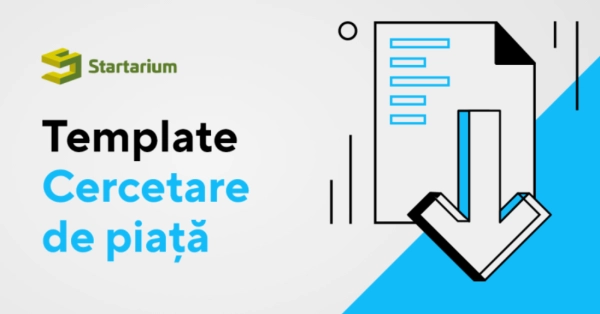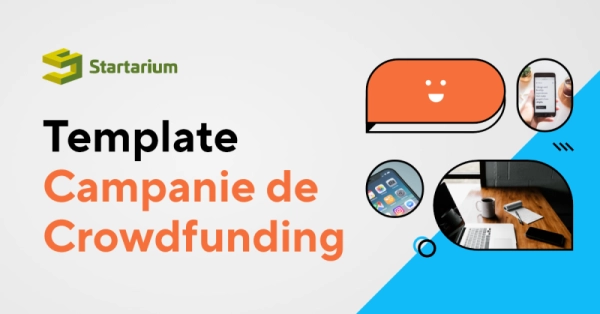A well-told story inspires, mobilizes and sticks in the minds of those who hear it. The same goes for your company – the story becomes a way to connect with those who might use your product, but also with those who are part of your team.

I know you keep hearing about the concept of story (tell a story, you don't have a story) and you don't know what in the world they want from you. Do they want you to say something corny, or introduce yourself as the center of the earth, or tell your customers some childhood memories? No, actually.
Telling a story means giving the person standing in front of you, be it an investor/client/stakeholder, the opportunity to walk with you on the path you’ve taken. It means showing them why what you're doing is important and doing that in a convincing way. We will talk about 3 major things:
-
How to convince people that what you are telling them is genuine.
-
What the elements of a story are
-
What the two types of stories you have to tell as an entrepreneur are and how you must tell them.
1. “Cristina is a sporty, early riser and animal-loving young woman." This sound like a Tinder presentation, right? It's dry as dust, doesn't say anything much really and it kind of makes you roll your eyes.
But what about this: "Cristina wakes up at 5 a.m. every day to run in the park with her dogs. I saw her running in the park with 2 happy Golden Retrievers tangling between her legs." This tells me that she is sporty, early riser and animal-loving young woman.
When you give someone the opportunity to draw their own conclusions, they are much more likely to believe you. This is called "show, don't tell". Whatever you may ask people to believe, think about why they would believe you, and then show them why they should believe you.
2. Once you master the "show, don't tell" part, you can move on to the story. A story always has a character who wants something, struggles with a lot of hardship, and makes a series of decisions to get that thing. This is the simplest definition and it includes all the important elements:
-
the character (me, my product or service, the customer),
-
the hardship (the conflict, the thing that keeps you on the edge of your seat till the end),
-
the decisions (the course of action).
Random things don't happen to a character, everything happens as a result of decisions made, otherwise we wouldn't have a story, but a series of unrelated events. The last element is getting (or not) the desired thing, which is the ending of the story everyone is waiting for.
The two major stories
An entrepreneur has two major stories to tell.
1. The first is the "founding myth" that shows how the business came to be and that must say something relevant about the values the entrepreneur has. The main character is the entrepreneur.
For example: In 2010, I realized that the only way I could feed my children healthy food was to find serious producers myself. In only one year, my small network of farmers and gardeners managed to sell dairy products and tomatoes to over a thousand families in Bucharest.
So we have a timeline, an issue, an ending, and a series of values that are easy to identify, even if they are not explicit. Healthy food, care for children, respect for small farmers and the generosity of sharing what you know with others. They all help the outside observers decide if this entrepreneur has the same values as them.
2. The second story of the entrepreneur is the story of the product or service it is selling. Here, the main character is the customer.
It is very difficult for parents to find chemical-free food for their children. So we thought of making a platform to connect them with dairy and vegetable producers in their county, whom we personally check before recommending them.
What we have here is a simple structure that helps a customer quickly identify with the problem and the solution that your business offers. You very quickly say who the customer is (the parent), what their problem is (they do not have access to good food) and what solutions you offer. This is enough to make the customer curious if they identify to anything of what you said.
As you can see, telling a story that humanizes you and brings you closer to your customers doesn't mean writing a 4-page essay and does not require writing talent. But what you must have is a clear vision of your product and the customer. If you have a business, you should already have these answers and things should be easier for you. Be confident that you can tell a story that can bring people closer to you.
The tool that helps you tell your product's story better
The Value Proposition Canvas helps you word your value proposition: a concise, easy-to-understand sentence that gives you clarity on your product's differentiators and customer benefits. More specifically, you can use it:
-
to correctly identify the customer segments you target and the needs you cover with your product/
-
to outline the most important elements of your solution that solves your customers' problems
-
to achieve the product-market fit
The value proposition should explain: what service/product you have to offer, who your customers are, how your service/product differs from others on the market, and how it benefits the customers who use it.
Create your first version using the tool on Startarium!















